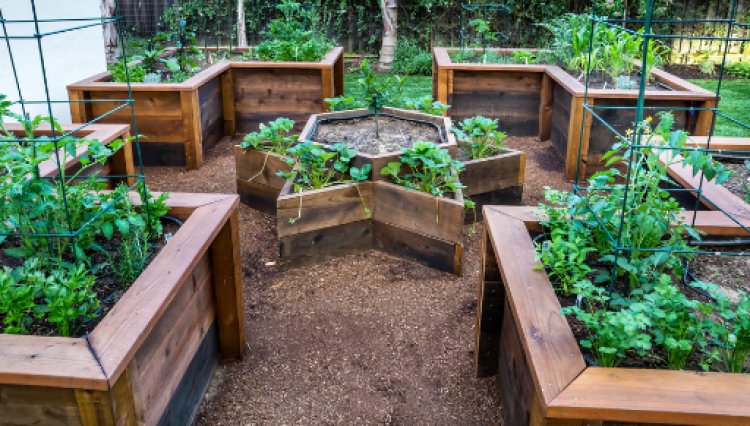What to Know About Raised Bed Gardening
A raised garden bed is mostly an enormous, bottomless container that rests directly on the ground and its heights differ depending on the gardener's demands and preferences.

Typically, it consists of a frame filled with soil; the frame may be built of stone or wood, although it will eventually need to be replaced.
If you want to start raising beds for the first time and want to make sure you start out correctly, here is a manual you can use to enhance your outcomes and address all of your concerns.
Why plant in raised beds
Raised beds give you control over the condition of the soil where your plants are being grown. A raised garden bed is simply mounded soil or a contained bed of soil raised above the surrounding grade. A deep, wide growing area is desired to encourage plant roots to extend below and outward.
When a bed is enclosed in a structure, you can enter and operate on your bed without changing the general design.
Raised beds are more convenient, and because they require less bending down to maintain, they make it easier to work in the garden.
Raised beds can raise plants to eye level for better viewing of insect difficulties.
Merits of raised bed gardening

Soil: When gardening on raised beds, the soil can be prepared to meet the needs of the plants. To maintain a plant that requires a lot of food, like tomatoes, you can alter the soil accordingly.
Early Planting: Raised bed soil heats up more quickly, thus, the plants begin growing earlier.
Better Drainage: Plants grow much better in raised beds because they have better drainage.
Variety of materials: There are numerous choices available when selecting the materials for raised beds. Examples include composite materials, metal, stone, and wood.
Accessibility: People with impairments can use it because the beds can be elevated to the appropriate height.
No Soil Compaction: There is no soil compaction because you can alter the soil to suit the demands of the plants.
Fewer Weeds - Because raised vegetable gardens are started from scratch, weeds aren't a big problem. When deciding on the mode of planting, this is definitely a plus.
Demerits of raised bed gardening
Can be expensive - More money will be spent because you will need to acquire all the necessary materials, beds, and soil from scratch. Raised bed gardening becomes expensive as a result.
Might be tiring – It involves more work after purchasing all the necessities, you will need to assemble the beds by hand.
Watering - Raised vegetable beds require more frequent watering because the soil dries out more quickly there.
Material replacement - If wood was used to construct the raised beds, you will eventually need to replaced them.
What to plant on raised beds

Here are some examples of plants you might choose for your raised bed gardening. You can grow nearly anything in your raised beds, provided the proper conditions. Cardinal flowers, sedges, and monkshood are a few moisture-loving plants that thrive in raised garden beds. Try Mediterranean herbs like rosemary and lavender or succulents like sedums and echeverias in a dry area. You can also grow a variety of vegetables on raised bed gardens.
Conclusion
There are numerous raised bed models and variations available. Building a raised bed garden doesn't require a lot of room. What you do require is a location exposed to the sun for at least 6 hours a day. Food plants need a lot of sunlight to develop properly and produce fruit thus the ideal garden location will be where your property receives the most sunlight.


























